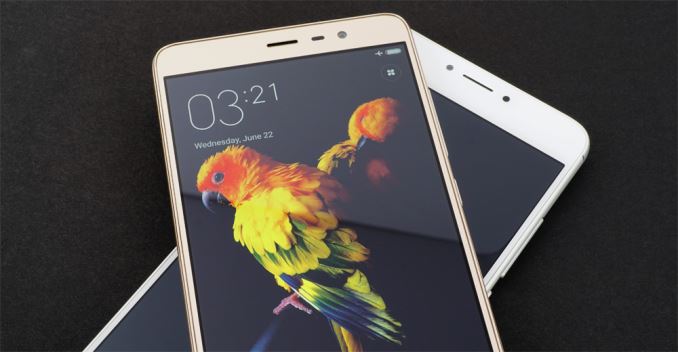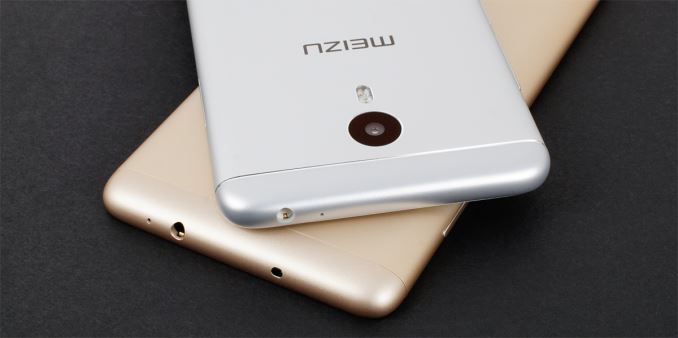The Meizu M3 Note vs. Xiaomi Redmi Note 3 Review: Comparing Notes
by Matt Humrick on July 12, 2016 8:00 AM EST- Posted in
- Smartphones
- Mobile
- Xiaomi
- Meizu
- Redmi
Final Words
I’ll admit it: I’m spoiled. I’m used to using the latest technology and playing with the recent flagship phones. I do not get many opportunities to review lower-cost devices, so I was not sure what kind of user experience to expect. After looking at the Meizu M3 note and the Xiaomi Redmi Note 3, I can say that both exceeded my initial expectations but in different ways and to different degrees.
The M3 note’s aluminum chassis is sturdy, with an attractive, symmetrical design. Additional machining details, such as the groove for the volume and power controls and the slots on the back that hide the endcap seams, are a nice touch shared with Meizu’s more expensive models. The M3 note also has a great fingerprint sensor, and Meizu’s Flyme OS includes some nice navigation features, like swiping up from the lower bezel to access recent apps instead of tapping a dedicated button.
The Redmi Note 3 and its Snapdragon 650 SoC easily outperforms other phones in its price range and approaches flagship numbers in some of our system performance tests. It cannot match the peak GPU performance of higher-tier SoCs, but its sustained performance is nearly the same once temperature forces the other GPUs to throttle frequency. Whether opening or switching apps, navigating the UI, scrolling in the browser, or working in apps, this phone feels fast. The Redmi Note 3 is a clear leader in performance per dollar.
Due in part to their larger-than-4000mAh batteries, both phones deliver excellent battery life, lasting more than 12 hours in our Wi-Fi browsing test—the longest of any phones we’ve tested—and nearly as long in PCMark. The M3 note’s battery life is generally a little better than the Redmi Note 3’s, but the latter remains close while delivering much better performance.
While there are positive elements for both phones, we need to be realistic. Neither phone delivers the same user experience or has the same feature set as more expensive flagships. In order to reach a lower price point, some compromises naturally need to be made. This becomes obvious as soon as their displays light up. Both panels are capable of reaching a respectable 450 nits max brightness and have good viewing angles, but black levels are subpar even among other phones in their class. Both panels also fail to cover the full sRGB gamut, reducing color accuracy. Their default calibrations also miss the target white point, giving the Redmi Note 3’s screen a blue tint and the M3 note’s a magenta hue. Both phones offer the ability to adjust white point, but only the Redmi Note 3 provides a setting that actually improves grayscale accuracy. Unfortunately, the Redmi Note 3’s poorly configured gamma leaves its screen looking dark with less shadow detail, which is most noticeable when watching movies or playing games.
Camera performance is another area where these two phones struggle. The Redmi Note 3 is clearly the better of the two, capable of capturing some nice looking images in good lighting. Its HDR mode is also effective, naturally brightening darker areas while maintaining color saturation and detail. As the lights dim, however, its performance drops. Like the M3 note and the other phones we tested in this price class, it produces noisy images lacking in detail. Even with good lighting, the M3 note’s images show excessive shot noise that noticeably degrades image quality. It also experiences issues with exposure and focus in certain conditions.
The M3 note is noticeably slower than the Redmi Note 3, but its performance is similar to other phones in its price range. People who primarily use their phone as a communication device—phone calls, email, messaging—or for working with lightweight apps—scheduling, note taking, web browsing—will likely find it to be fast enough. The M3 note can handle casual games, but it’s not capable of playing more demanding 3D titles.
At the beginning of this review I noted how similar the M3 note and Redmi Note 3 are on paper and wondered if this would translate into an equivalent user experience. The short answer is no. The Redmi Note 3’s superior performance and slightly better camera give it the edge. It just feels fast, much faster than its peers using octa-core A53 CPUs, which just are not going to be competitive at this price point anymore.
While the pace of innovation at the high-end naturally slows, the mid-range and low-end phones start looking more attractive. Flagship features and hardware continue to trickle down to lower price points, producing more-capable phones with better user experiences. Both the M3 note and Redmi Note 3 are evidence of this trend. Xiaomi’s introduction of the Redmi Note 3, however, goes even further, signaling a jump in capability that all new phones in its category will need to match.














79 Comments
View All Comments
jospoortvliet - Wednesday, July 13, 2016 - link
Yeah, I appreciate the real life benchmarks but the software can be fixed, the hardware can not so it would be good to know where the potential of the phone lies. The measurement of the read and write speeds are very helpful in this regards but a more synthetic test would be nice, honestly I don't trust something like PCMARK at all.jospoortvliet - Wednesday, July 13, 2016 - link
I mean, "writing", "video", what are those supposed to test? Performance while writing get or playing video? Who cares, what phone has rouble with either of those tasks, a 2005 phone was fast enough...John Bens - Tuesday, July 12, 2016 - link
Nice comparison. Geekbuying actually has the M3 Note on sale at $152.99 which is a pretty good deal.Geranium - Tuesday, July 12, 2016 - link
Good phones. But as a Chinese phore there are two problems as usuali. UI
ii. Software update.
Are Chinese phone manufacturers shameless? Instead following Android design language they copy iOS design and feel good for it.
yoghibawono - Wednesday, July 13, 2016 - link
they dont try to copy. They follow what the majority of their country likes. Since early 2005 I believe even HTC and Huawei dont use any app drawer. And the fact that their UI is more user friendly, vast themes, feature-rich. Even if their base is kitkat; look whose first implementing permission manager? these chinese UI. Integrated backup-restore etc etc.Impulses - Thursday, July 14, 2016 - link
Uh, pretty sure HTC has an app drawer...aryonoco - Tuesday, July 12, 2016 - link
Thanks for the review Matt, much appreciated.Also thanks for the LTE bands support table. This is something that I've argued should be present in all reviews, and it's great to see it so prominently and clearly laid out.
In future, can I ask Anandtech to also focus on the Android Security Level that a phone runs? I find it increasingly disturbing that OEMs are ignoring Google's monthly security patches. One review of recent security bulletin shows that each month they are fixing serious vulnerabilities, some of them being kernel-level vulnerabilities with remote exploit capabilities. In my opinion it is irresponsible, borderline unethical for a manufacturer to release a handset with known remote root exploits and then fail to patch it.
It is one thing for an OEM to change the UI the way MIUI does, at the end of the day, these are matters of preference and taste. It is even acceptable in my view not to update the Android OS due to business/technical reasons. But not patching security vulnerabilities? That should not be acceptable. We need manufacturers to at least commit to supporting their handsets for the duration of their lifetime (whether that's two years or three years or whatever) with security patches. And we need to call out and name and shame those who don't. Frankly if websites such as AT don't do this, I don't know who will.
Let's put it this way, if say Windows 8 or Windows 10 had a remote exploit vulnerability, and yet a laptop running the said OS didn't get this vulnerability fixed in a reasonable amount of time (for whatever reason), AT and the whole tech media would be up in arms. At the end of the day, I don't care whether it's Google's fault or the SoC vendor's fault or the OEM's fault or the carrier's fault, these are contractual details and they can sort it out between themselves. The customer pays money to an OEM (or a carrier) and the customer's contractual agreement is with them. We need to call out this situation, hold the OEM, the carrier, Google and the whole ecosystem to account. As smartphones move ever more closer to becoming general purpose computers, and they hold vast amounts of our personal information, this situation is unacceptable.
abcdravi - Wednesday, July 13, 2016 - link
I agree.Pissedoffyouth - Wednesday, July 13, 2016 - link
XIaomi are very good at patching security updates from what I've foundaryonoco - Wednesday, July 13, 2016 - link
Great! So when you go to software info or about device (or whatever Xiaomi is calling it) you can see the Android security patch level? And they are mostly up to date? If this is true, it would make Xiaomi phones a hugely more appealing purchase in my opinion.And I think it would be great if a website as thorough as AT paid attention to this, and called it out.